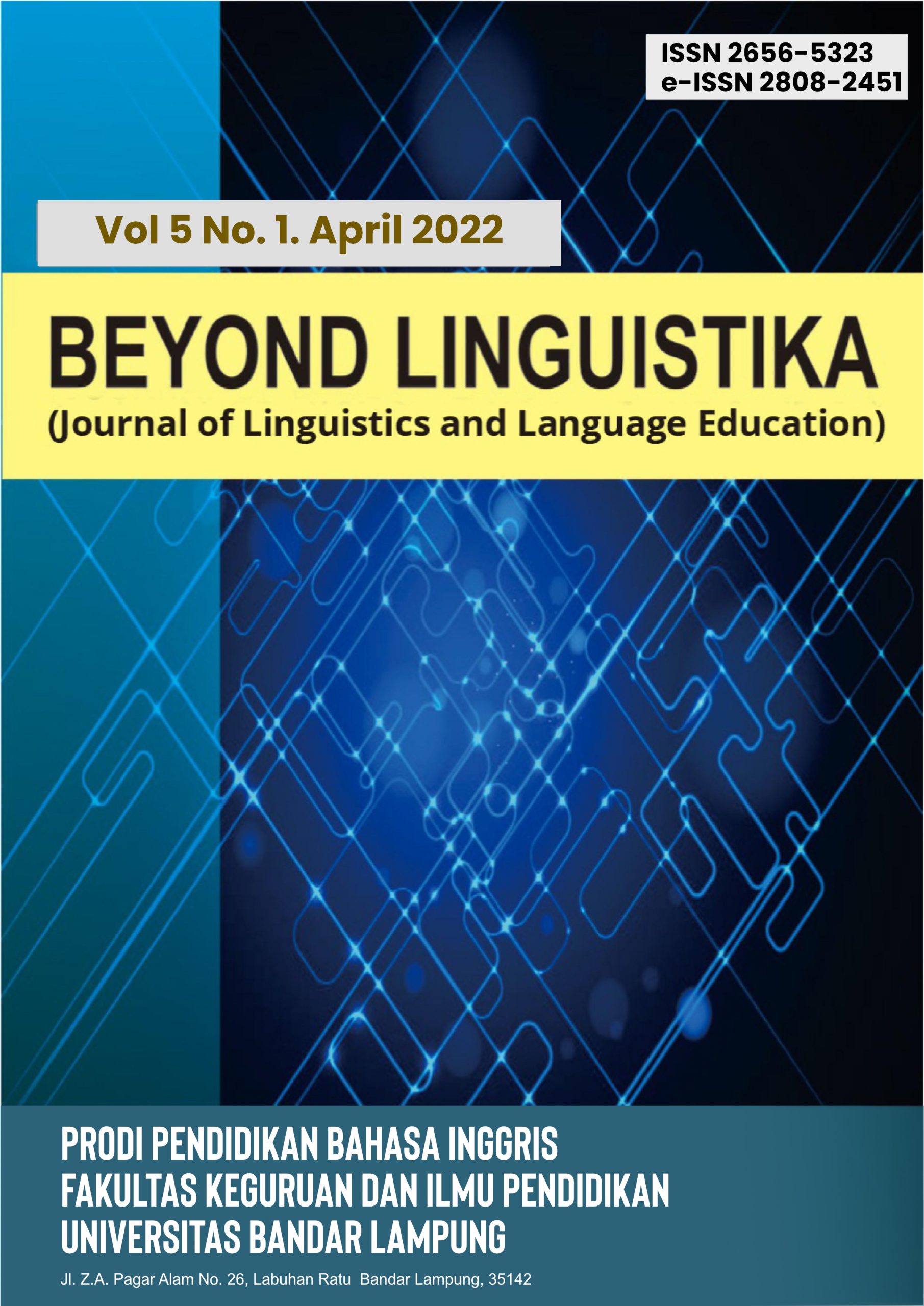SPEECH ACTS IN LANGUAGE COMMONLY USED BY PEDICAB DRIVERS IN PRAWIROTAMAN AREA OF YOGYAKARTA
Abstract
The objectives of this study is to describe (1) the types of speech acts used by pedicab drivers in Prawirotaman area of Yogyakarta and (2) the functions of the speech acts used by pedicab drivers in Prawirotaman area of Yogyakarta.
The type of this study is a descriptive qualitative method. The sources of data used the utterances taken from the transcription of pedicab drivers in Prawirotaman area of Yogyakarta. The research instruments were the recorder to record the utterances produced by pedicab drivers in Prawirotaman area of Yogyakarta and the headset was used to hear the utterances produced by pedicab drivers. The technique that was used to analyze the data is a discourse analysis.
This study shows that (1) based on the analysis, it can be concluded that there were four types illocutionary speech acts. They were commissive, directive, expressive, and representative. Based on the analysis, there were 4 utterances of commissive (30.7%), 3 utterances of directive (23.1%), 3 utterances of expressive (23.1%), and 3 utterances of representative (23.1%). (2) Based on the result of analysis, the types of illocutionary speech acts of pedicab drivers’ utterances used by pedicap drivers in Prawirotaman area of Yogyakarta were commissive, directive, expressive, and representative. In commisive speech act, the pedicab drivers promised with the tourists that they would change their performed in order to get attentions from the other people. In directive, the pedicab driver used directives of request and command. The directive of request can be seen when the pedicab driver asked the tourist to give his command about bakpia as a special food from Yogyakarta. The directive of command can be seen when the tourists gave command that Bakpia is good and delicious. . In expressive, the pedicab driver often expressed the truth of the expressed proposition in his conversation. It happened when pedicab driver tried to give explanations about the specific location. In representative, the pedicab driver used expressive of thanking when tourists tanked to the pedicab driver because he had gave the money to get pedicab driver’s services.Keywords
Full Text:
PDFReferences
Allan, K., & Brown, E.K. (2010). Concise Encyclopedia of Semantics. Amsterdam, Netherlands: Elsevier.
Austin, J. L. (1975). How to Do Things with Words. Oxford: University Press.
Bogdan dan Taylor, 1975 dalam J. Moleong, Lexy. 1989.Metodologi Penelitian Kualitatif. Bandung: Remadja Karya.
Parker, Frank. 1986. Linguistics for Non-Linguists. London: Taylor & Francis Ltd.
Yule, George. 1996. Pragmatics. Oxford: Oxford University press.
Searle, John R. 1969 Speech Acts. An Essay in the Philosophy of Language. Cambridge: Cambridge University Press.
DOI: http://dx.doi.org/10.36448/bl.v1i1.1345
Refbacks
- There are currently no refbacks.















